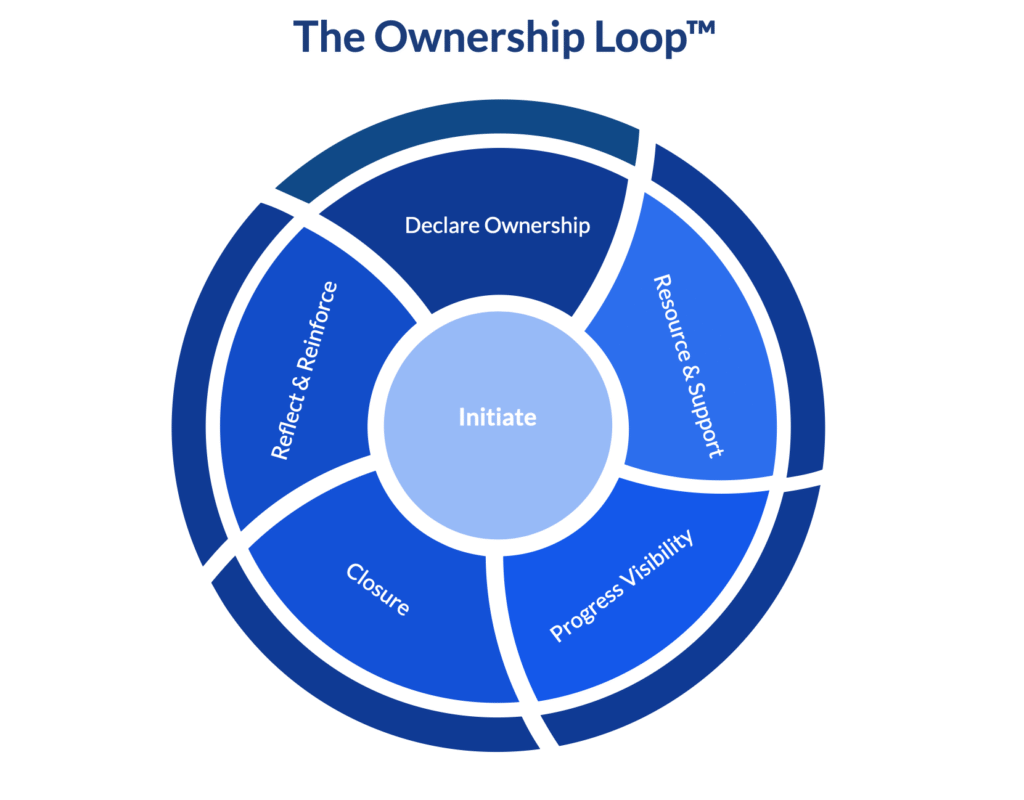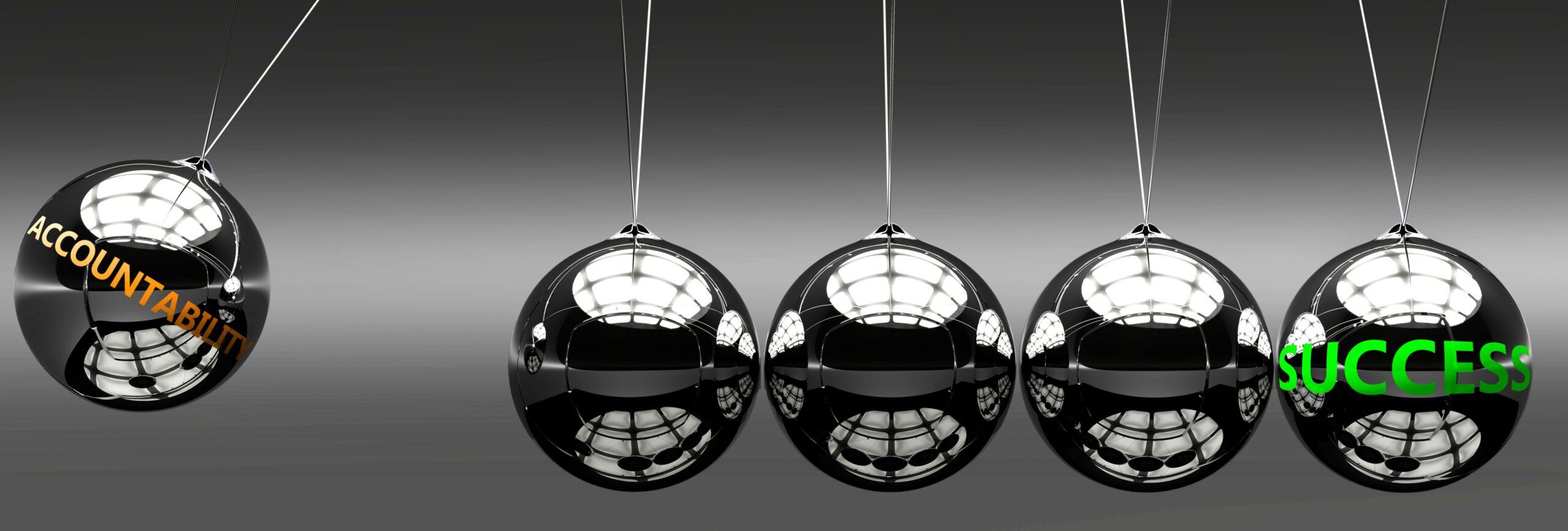Accountability isn’t pressure. It’s clarity in motion — built into how your organization thinks, decides, and follows through.
As part of our ongoing exploration of The SCALE Edge™ framework — a system designed to help mid-sized companies navigate the complexities of growth by strengthening leadership, energizing culture, and unifying teams — this article focuses on the third essential lever: A – Activate Accountability.
Grounded in neuroscience, developmental psychology, and real-world business experience, each element of The SCALE Edge™: Structure with Flexibility, Clarify Purpose & Priorities, Activate Accountability, Lead With Intention, and Energize Culture — translates science and experience into practical systems for leading through complexity and growth.
When accountability is embedded into the way teams operate, it becomes a multiplier for speed, trust, and execution.
Why This Matters
Organizations that fail to scale accountability don’t just suffer from poor execution — they lose speed, engagement, and credibility. The data — and the day-to-day experience of leaders — make it clear:
- Only 23% of employees strongly agree they can apply their strengths daily (Gallup) — often because ownership is unclear or undermined.
- Companies with a “culture of performance ownership” are 2.8x more likely to outperform peers on shareholder returns (McKinsey).
- Leaders who model accountability through defined roles and consistent follow-through build trust and increase coordination speed (MIT Sloan).
- Ambiguous accountability is a top reason cross-functional initiatives fail (Harvard Business Review).
In scaling environments, leadership systems either reinforce ownership — or quietly erode it. When accountability is diffuse, so is momentum. When it’s activated, alignment sharpens, resilience builds, and speed becomes sustainable.
Accountability Is a System, Not a Slogan
- As a personality trait: “They just don’t take ownership.”
- Or as a punitive measure: “We need to hold people accountable.”
But neuroscience and developmental psychology show us a different picture.
What Actually Drives Accountability?
At its core, accountability is shaped by the system — not the individual. People step into ownership when they:
- Understand exactly what’s expected of them
- See how their work connects to something meaningful
- Trust they’ll have the support to follow through
- Believe their actions matter to others
Accountability isn’t a trait — it’s an outcome of thoughtful system design, trust, and cognitive clarity.
When those conditions are in place, people naturally take ownership — no pressure required.
The Science Behind It
From Neuroscience:
The brain craves clarity, predictability, and connection. When expectations are vague, people experience cognitive overload — triggering stress and risk-avoidance.
From Developmental Psychology:
Ownership develops through growing autonomy, competence, and relatedness — the core of Self-Determination Theory, which underpins sustained motivation.
From Business Practice:
Companies that operationalize accountability through decision systems and feedback loops perform better, scale faster, and retain talent longer.
Common Traps for Mid-Sized Companies
As organizations grow, they often fall into patterns that unintentionally erode accountability:
1. Heroic Leadership
Senior leaders step in to solve or decide — because it feels faster. But this crowds out others’ development and ownership.
2. Delegation by Hope
Leaders assume clarity exists — and only check in when results fall short.
Example Breakdown: A CEO subtly reshapes priorities midstream without realigning the team. What was a shared direction becomes a moving target. Accountability fails — not due to apathy, but poor system design.
So how do we shift from reactive delegation to designed ownership?
Shift from Responsibility to Ownership Activation
We’re not just aiming for more personal responsibility. We’re building shared ownership, embedded into your decision architecture — how decisions are made, communicated, and reinforced across the organization.
Definition: Decision architecture is a concept from behavioral economics: designing systems and environments that guide consistent, intentional choices.
In High-Accountability Systems, You’ll See…
1. Clarity on “Done”
Accountability collapses under ambiguity. Teams define what success looks like — including scope, timing, and quality — and revisit it as conditions evolve.
2. Commitments Made Visible
Public commitments drive engagement.
Teams that track commitments visibly and check in regularly outperform those relying on private updates or top-down check-ins (Harvard Business Review).
3. Closing the Loop
Open loops weaken follow-through.
Decisions made but not reinforced cause hesitation and misalignment.
The Ownership Loop™ — our proprietary model — reinforces commitment across six key phases:
- Initiate
- Declare Ownership
- Resource & Support
- Progress Visibility
- Closure
- Reflect & Reinforce
This model is an integral part of our leadership programs and executive consulting engagements.

A six-phase model for scaling accountability across teams and initiatives. By embedding ownership into daily leadership rhythms—from initiation to closure and reflection—it drives clarity, follow-through, and momentum.
4. Modeled Behavior from Leaders
Mirror neurons prime people to unconsciously emulate leadership behavior.
When leaders model urgency, closure, and follow-through — accountability becomes contagious.
5. Productive Tension
Accountability thrives in systems where people are challenged and supported.
According to Self-Determination Theory, motivation increases when people feel:
- Autonomy – I’m trusted
- Competence – I’m capable
- Relatedness – This work matters
Productive tension isn’t fear—it’s psychological stretch paired with the belief that success is possible.
From Compliance to Commitment
Compliance gets checkboxes. Commitment fuels momentum.
In companies where accountability is activated, you’ll hear:
- “This is mine to figure out.”
- “I know what success looks like.”
- “If I get stuck, I’ll escalate — here’s my plan.”
This mindset doesn’t happen by accident. It’s built on:
- Psychological ownership, shaped by systems and norms
- Operational rituals, like public commitments and post-mortems
- Consistent modeling from leadership
Case in Point:
At a mid-sized health tech company, redesigning decision and tracking processes between product, engineering, and go-to-market teams cut time-to-launch by 62% in six months.
Accountability became a structural advantage, not a performance conversation.
Ask Yourself
- Where in our leadership system do decisions quietly shift without team alignment?
- Are we unintentionally signaling that urgency matters more than closure?
- Which parts of our accountability system rely on memory or goodwill instead of design?
Bottom Line
Activating accountability isn’t about trying harder — it’s about designing smarter.
It means building a leadership system where ownership becomes the norm — grounded in science, proven in practice.
When The Ownership Loop™ is consistently closed:
Alignment sharpens. Execution accelerates. Leadership scales.
Accountability isn’t a matter of pressure—it’s a product of leadership design.
If your organization is growing—or stuck—and accountability feels inconsistent, it’s likely not a motivation issue. It’s a system design issue.
The most effective mid-sized companies don’t just expect ownership. They engineer it—through clarity, follow-through, and behavior that scales.
Ready to elevate accountability from a friction point to a strategic advantage? Let’s talk.
What’s Next?
Next in the SCALE Edge™ series: L – Lead With Intention — we will explore how executive behavior shapes the entire leadership system and how leadership signals cascade through the organization—intentionally or not.
Stay tuned.

